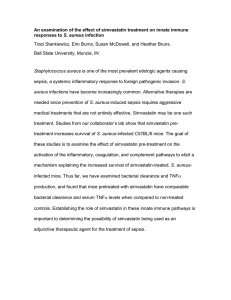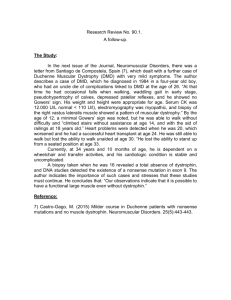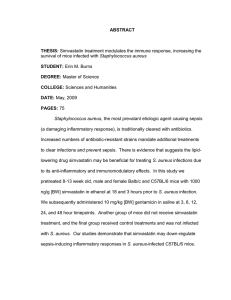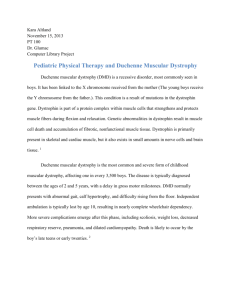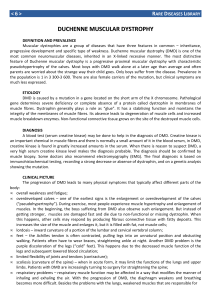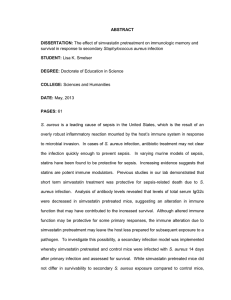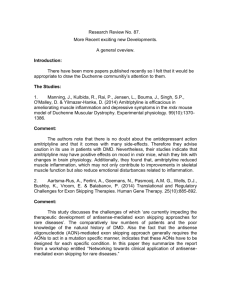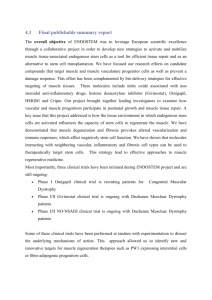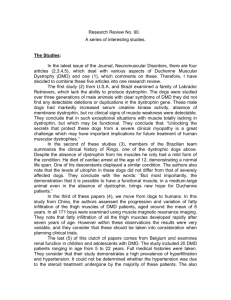DMD reviews 96 - Action Duchenne
advertisement
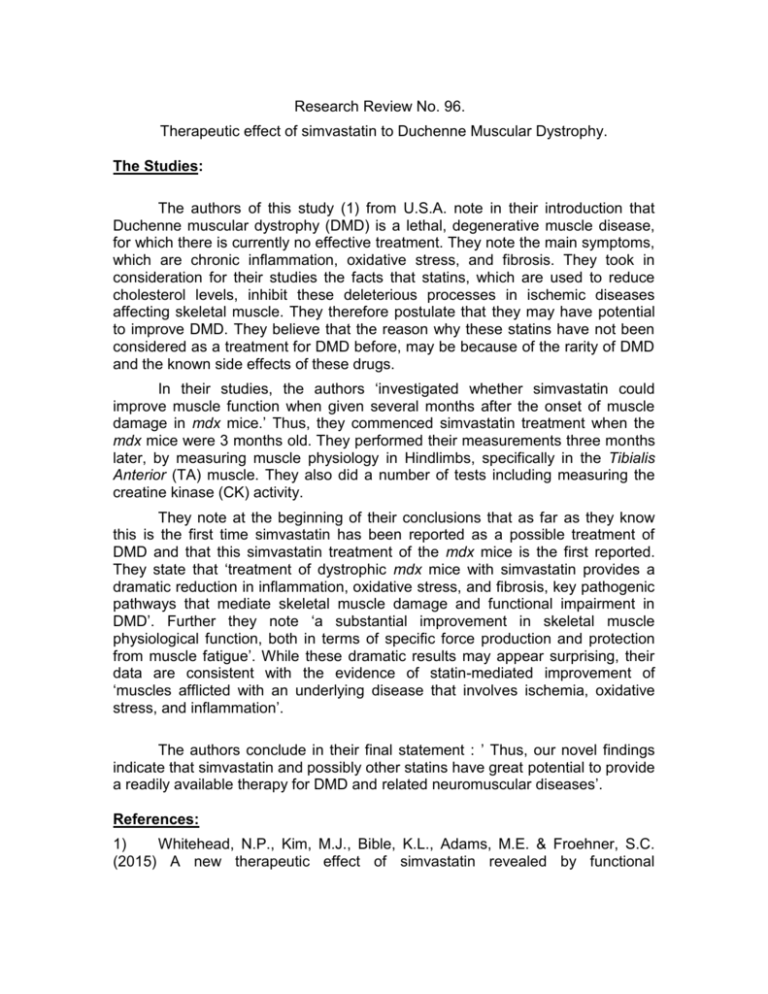
Research Review No. 96. Therapeutic effect of simvastatin to Duchenne Muscular Dystrophy. The Studies: The authors of this study (1) from U.S.A. note in their introduction that Duchenne muscular dystrophy (DMD) is a lethal, degenerative muscle disease, for which there is currently no effective treatment. They note the main symptoms, which are chronic inflammation, oxidative stress, and fibrosis. They took in consideration for their studies the facts that statins, which are used to reduce cholesterol levels, inhibit these deleterious processes in ischemic diseases affecting skeletal muscle. They therefore postulate that they may have potential to improve DMD. They believe that the reason why these statins have not been considered as a treatment for DMD before, may be because of the rarity of DMD and the known side effects of these drugs. In their studies, the authors ‘investigated whether simvastatin could improve muscle function when given several months after the onset of muscle damage in mdx mice.’ Thus, they commenced simvastatin treatment when the mdx mice were 3 months old. They performed their measurements three months later, by measuring muscle physiology in Hindlimbs, specifically in the Tibialis Anterior (TA) muscle. They also did a number of tests including measuring the creatine kinase (CK) activity. They note at the beginning of their conclusions that as far as they know this is the first time simvastatin has been reported as a possible treatment of DMD and that this simvastatin treatment of the mdx mice is the first reported. They state that ‘treatment of dystrophic mdx mice with simvastatin provides a dramatic reduction in inflammation, oxidative stress, and fibrosis, key pathogenic pathways that mediate skeletal muscle damage and functional impairment in DMD’. Further they note ‘a substantial improvement in skeletal muscle physiological function, both in terms of specific force production and protection from muscle fatigue’. While these dramatic results may appear surprising, their data are consistent with the evidence of statin-mediated improvement of ‘muscles afflicted with an underlying disease that involves ischemia, oxidative stress, and inflammation’. The authors conclude in their final statement : ’ Thus, our novel findings indicate that simvastatin and possibly other statins have great potential to provide a readily available therapy for DMD and related neuromuscular diseases’. References: 1) Whitehead, N.P., Kim, M.J., Bible, K.L., Adams, M.E. & Froehner, S.C. (2015) A new therapeutic effect of simvastatin revealed by functional improvement in muscular dystrophy. Proceedings of the National Academy of Sciences of the United States of America. 112(41):12864-12869. Karl A. Bettelheim 15.11.2015
